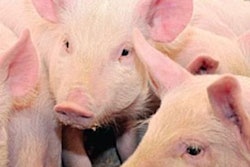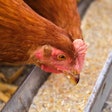Dr. Mauro di Benedetto, senior technical service manager with Kemin, discussed the outcomes of the company’s European roadshow on the nutritional profile of feed fats and oil based on the data it gathered from European feed mills and pig farmers.
Regarding fat and oil, the main concerns of producers and feed formulators focused on three main areas: quality, variability and evaluation. In terms of quality, oxidative properties and their characteristics prove challenging. Fat and oil composition variability, linked to poor formulations and negative effects on final animal production, was another pervasive issue. Finally, the producer’s ability to evaluate the proper energy values and then search for suitable lipid alternatives concerned those surveyed.
Variability complicates formulating
Fifty years ago, formulators using soy oil and single-origin animal fats faced very low levels of nutrient variability. In contrast, blends of fatty acids and byproducts entered the market in the 2000s and are the most commonly used. This diverse variety of lipids – animal fats, vegetable oils, acid oils, blended fats and recovered vegetable oils – vary in their physical and chemical properties.
How important is oil and fat variability? Very important.
According to trial data provided by Benedetto, young pigs (between 10 and 20 kg) experience variations in digestible energy availability in these fats and oils, which affect their performance.
“The two parameters of energy calculations between free fatty acid contents from oils of different origins can vary from 1-100, which is the situation of fats on the market that feed mills use,” he says. “Unsaturated and saturated ratios are very variable as well.”
Lipid testing
Kemin’s Lipid Evaluation Test (LET) is a new tool the company offers its customers to evaluate the variability of fats and oils.
The test evaluates the oxidative status of fats and oils to assign the proper energy value to the most common lipid sources. It also allows the user to evaluate alternative sources. Ultimately, the tool can be used to reduce feed variability, improve feed optimization, and reduce feed costs.
How does it work? The test takes into account three parameters of oxidative status: the Thiobarbituric acid-anisidin value (TBA), the historic oxidation; peroxide values (PV), present oxidative action; and sensitivity to oxidation (OSI), which points to future outcome.
Then the nutrition parameters (free fatty acids and unsaturated fatty acids) and the diluting factors (MIU and NEM) are evaluated. The dietary energy is then tabulated by plugging the data into Wiseman & Blanch formula.
In the end, the user is able to determine the risk of oxidation of fats and oils as a fatty acid profile is produced. According to Benedetto, once this information is made available, one finds that “many times there are surprises.”
Finally, a calculation of energy is used to identify the diluting factors determined by nutritional parameters.
“Always calculate the diluting factors,” Benedetto advises. “If you use corn, you consider moisture, so it not logical to include diluting factors for oils as well?”
The Pig Forum stage is located in the center of Hall 9, the swine hall, at EuroTier. EuroTier 2014 runs Nov. 11-14 in Hanover, Germany.
















